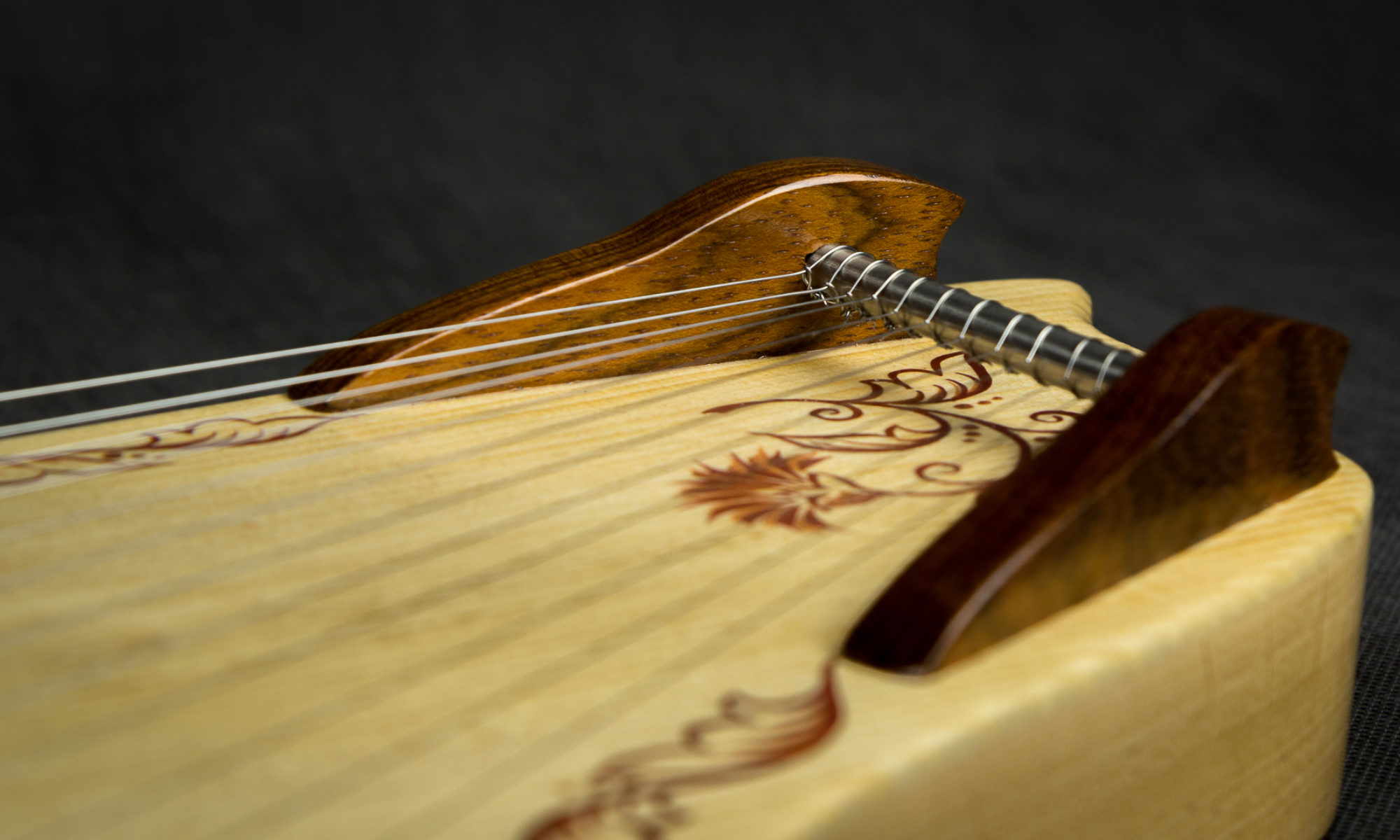The word Gusli is in modern times used by Russians and other Slavic peoples for a range of stringed instruments (rather like the word harpa in Swedish), but we use the word as it is used in the early Bylinys (early Russian literature) to refer to Kantele type instruments, both with and without a playing window.
What distinguishes these from true Kantele is the type of string holder, being two seperate pieces attached through or to the soundboard, rather than a single piece that circles round to hold both ends of the string holding rod.
The earliest Guslis have playing windows, so one hand can stop the strings sounding whilst the other strums, or so they can be plucked from both sides, like a harp. It is not known whether this type of instrument arose as a response to contact with lyres (and the Gusli previously had no window) or whether they had always had a window. Arguments can be made for both opinions. The earliest Guslis, dating from around 1050, were found in Russia settlements which had a multi-ethnic mix of Finns, Slavs and Scandinavians.
The instruments pictured here are based on the Slovisha Gusli, found in Novgorod and dateed to around 1050 AD. It bore the inscription ‘Slovisha’ (Nightingale) in Cyrillic. These instruments are available strung in red brass, gut or nylgut.

